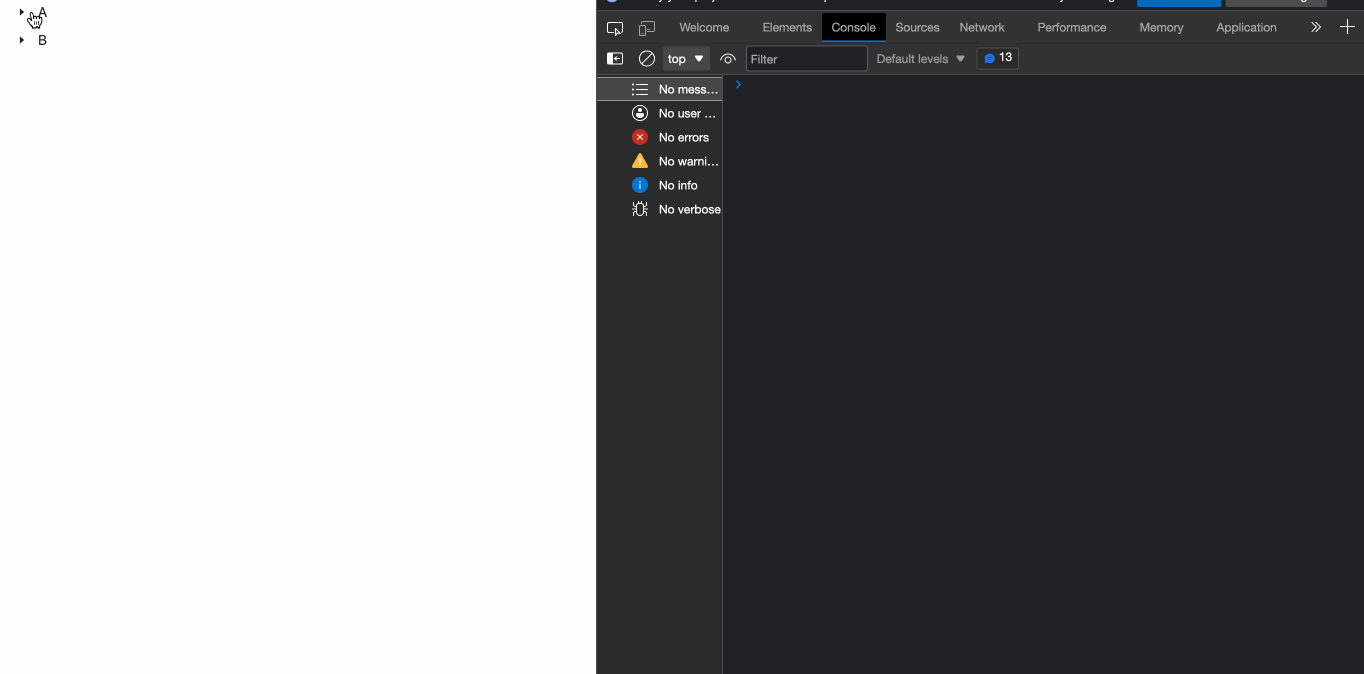1
2
3
4
5
6
7
8
9
10
11
12
13
14
15
16
17
18
19
20
21
22
23
24
25
26
27
28
29
30
31
32
33
34
35
36
37
38
39
40
41
42
43
44
45
46
47
48
49
50
51
52
53
54
55
56
57
58
59
60
61
62
63
64
65
66
67
68
69
70
71
72
73
74
75
76
77
78
79
80
81
82
83
84
85
86
87
88
89
90
91
92
93
94
95
96
97
98
99
100
101
102
103
104
105
106
107
108
109
110
111
112
113
114
115
116
117
118
119
120
121
122
123
124
125
126
127
128
129
130
131
132
133
134
| import { Tree } from 'antd'
import { DataNode, TreeProps } from 'antd/lib/tree'
import { useState } from 'react'
const AntdTree = () => {
const [treeData, setTreeData] = useState<DataNode[]>([
{
title: 'A',
key: 'A',
children: [
{
title: 'A-1',
key: 'A-1',
children: [
{
title: 'A-1-1',
key: 'A-1-1'
}
]
},
{
title: 'A-2',
key: 'A-2'
},
{
title: 'A-3',
key: 'A-3'
},
{
title: 'A-4',
key: 'A-4'
}
]
},
{
title: 'B',
key: 'B',
children: [
{
title: 'B-1',
key: 'B-1'
},
{
title: 'B-2',
key: 'B-2'
}
]
}
])
const handleDrop: TreeProps['onDrop'] = (info) => {
const dragKey = info.dragNode.key
const dropKey = info.node.key
const dropPos = info.node.pos.split('-')
const realDropPosition = info.dropPosition - Number(dropPos[dropPos.length - 1])
const isDropToGap = info.dropToGap
const searchNode = (
data: DataNode[],
key: React.Key,
callback: (nodeData: DataNode, nodeIndex: number, nodeArray: DataNode[]) => void
) => {
for (let i = 0; i < data.length; i++) {
const isMatchKey = data[i].key === key
if (isMatchKey) {
return callback(data[i], i, data)
}
if (data[i].children) {
searchNode(data[i].children!, key, callback)
}
}
}
const newTreeData = JSON.parse(JSON.stringify(treeData))
let dragObj: DataNode
searchNode(newTreeData, dragKey, (nodeData, nodeIndex, nodeArray) => {
nodeArray.splice(nodeIndex, 1)
dragObj = nodeData
console.log('dragObj', dragObj)
})
if (!isDropToGap) {
searchNode(newTreeData, dropKey, (nodeData) => {
nodeData.children = nodeData.children || []
nodeData.children.unshift(dragObj)
})
}
else {
searchNode(newTreeData, dropKey, (nodeData, nodeIndex, nodeArray) => {
console.log('nodeArray', nodeArray)
console.log('dropDataIndex', nodeIndex)
if (realDropPosition === -1) {
nodeArray.splice(nodeIndex, 0, dragObj)
} else {
nodeArray.splice(nodeIndex + 1, 0, dragObj)
}
})
}
setTreeData(newTreeData)
}
return (
<div>
<Tree treeData={treeData} selectable={false} onDrop={handleDrop} draggable blockNode />
</div>
)
}
export default AntdTree
|


